By Lito Ortiz, Therapy Resource/DOR, Brookfield Healthcare Center, Downey, CA
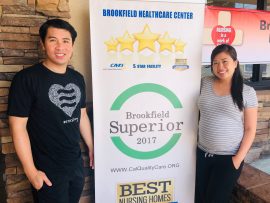 An interview with Tom Chan COTA and Cristina Amansec SLP.
An interview with Tom Chan COTA and Cristina Amansec SLP.
Brookfield Healthcare Center in Downey, CA is made up of some pretty amazing and selfless therapists. These heroes have truly shown their true colors during this time. At the start of the pandemic, Tom was one of those kind hearted individuals that bought N95 masks and goggles for the CNAs and our front desk out of his own money. He was one of the first people to dedicate himself to treat the COVID patients. Indeed a very courageous individual. Cristina was 4 months pregnant when the pandemic started. Despite her condition, she continued to fight and treated patients with COVID infection. She is courageous and a fighter. She also dedicated her own time to get extra supplies of masks, sanitizer, and reusable gowns. We got all the help we needed to win the fight because of her. After all the initial craziness died down, she focused her energy on getting us free food and goodies. She fed the whole facility for a total of 10 lunches overall. We are so thankful for her because she exemplifies the true meaning of Brookfield culture—being selfless and always looking out for others before herself.
Tom Chan, COTA
How long have you been with the company?
This August will be my 10th year. I started as per diem and was able to see the atmosphere, culture, and dedication of the rehab. The leadership was also strong so I could onboard full time.
What is the meaning of teamwork for you?
Teamwork is the ability of a group of people to come together to accomplish specific goals. The key is to have a shared vision to keep the group motivated and competitive but also provide a safe space where egos are set aside so people can rise and take the lead in some situations but be OK to step back and allow others to step up when their skill set will better serve that particular situation.
How has this pandemic affected you and your team?
The pandemic has affected how I view the frugality of everything that we have. One microscopic being can put the world at a standstill; can destroy families; end businesses and completely change the word normalcy as we know it. But it has also allowed many to take a step back and appreciate what they have, push harder to protect others and give me faith that humanity still exists.
How the pandemic affected the team is taking us through a roller coaster of emotions?
From anxiety, to fear, to relief, to sadness, to acceptance among many, many other feelings. It has forced us to say farewell to some residents, and compelled us to shed more tears as a group and as individuals than necessary. But it has also bonded and reinvigorated the rehab team. We have a trust within each member that we have each other’s back. It’s a good feeling when you know that there are 11 other people keeping an eye on you when you come to work.
Cristina Amansec, SLP
How long have you been with the company?
4.5 years
Why Ensign?
With Ensign, I felt it was a company that would offer the support — clinically and personally — in order for me to grow as a clinician. It took me time to ultimately decide to be full-time with Ensign, but I’m so happy I made the leap!
What is the meaning of teamwork for you?
Teamwork for me means a collaboration not only with my wonderful rehab team, but also with our nurses, kitchen, housekeeping and maintenance personnel. It’s the ability for all our separate job titles to foster together as one entity. As a united front, we are all so equally important and powerful in making a difference in our patients’ lives and experiences here in Brookfield.
How has this pandemic affected you and your team?
This pandemic has definitely brought our rehab team closer together! It has been mentally and physically challenging, but I am so proud and humbled by the feats our team has endured and our perseverance to push through the fear of the unknown. I am so grateful for the familial protectiveness and doting that we all equally provided each other — I couldn’t fathom what I would have done in this pandemic without such a loving and compassionate team.
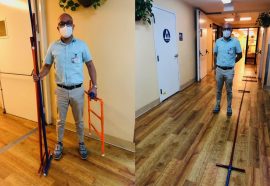

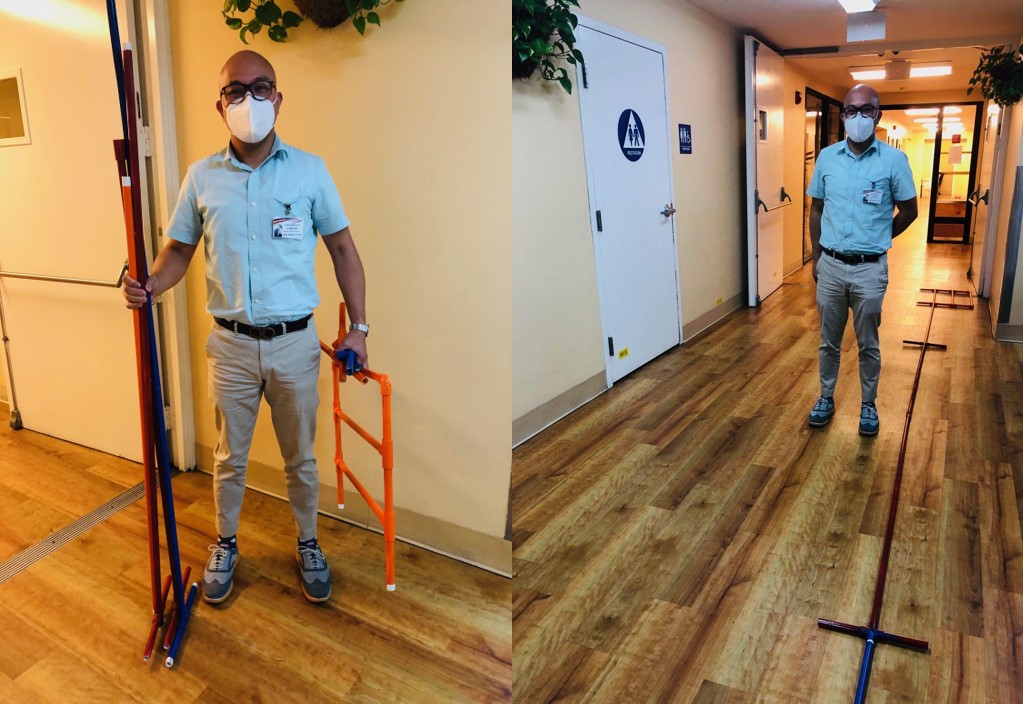
 An interview with Tom Chan COTA and Cristina Amansec SLP.
An interview with Tom Chan COTA and Cristina Amansec SLP.
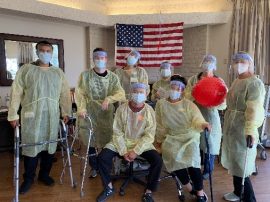 As mid-March was approaching and COVID-19 was spreading, I stopped at a facility in the Momentum market and there was a temperature checkpoint. I knew we were in for some changes. For a while, I carried on as best I could, but I kept thinking there must be more I can do to help. Then, I received a call from Tali Gerassi, DOR at Grossmont Post-Acute (GPAC) in the San Diego market. They had suddenly lost their long-time SLP and desperately needed help.
As mid-March was approaching and COVID-19 was spreading, I stopped at a facility in the Momentum market and there was a temperature checkpoint. I knew we were in for some changes. For a while, I carried on as best I could, but I kept thinking there must be more I can do to help. Then, I received a call from Tali Gerassi, DOR at Grossmont Post-Acute (GPAC) in the San Diego market. They had suddenly lost their long-time SLP and desperately needed help.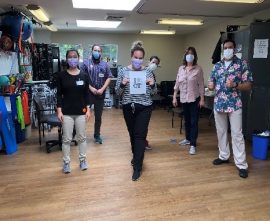
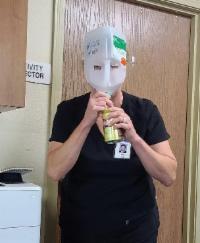 Our amazing ADOR George Palin and his wife have been working tirelessly to provide the entire building (and a few to our sister buildings) with cloth masks, and they are now working on gowns to keep us all safe. Today the team wanted to say a special thank-you to him. One of our other amazing PTAs, Heidi Carmichael, thanked George for providing her with a more comfortable mask (pictured — you gotta laugh sometimes, right?) and read the following poem as a thank-you. I thought this is so true of George and so many others who are going above and beyond to take care of each other and our residents.
Our amazing ADOR George Palin and his wife have been working tirelessly to provide the entire building (and a few to our sister buildings) with cloth masks, and they are now working on gowns to keep us all safe. Today the team wanted to say a special thank-you to him. One of our other amazing PTAs, Heidi Carmichael, thanked George for providing her with a more comfortable mask (pictured — you gotta laugh sometimes, right?) and read the following poem as a thank-you. I thought this is so true of George and so many others who are going above and beyond to take care of each other and our residents.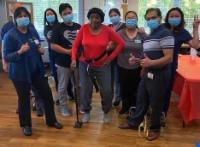
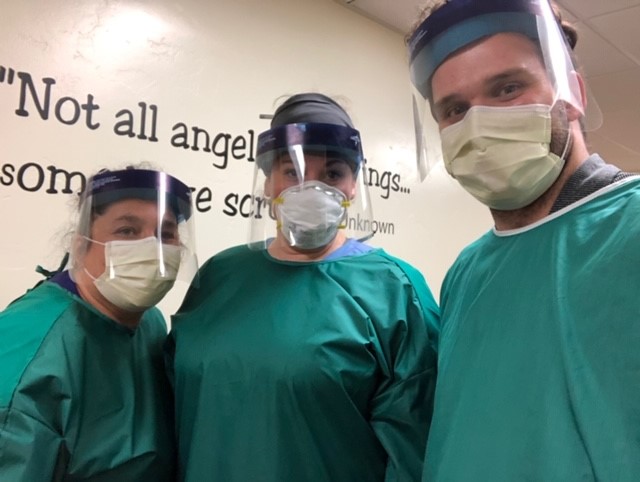
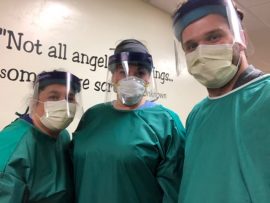 By Jared MacDonald, Operations Manager, City Creek Post Acute Care, Salt Lake City, UT
By Jared MacDonald, Operations Manager, City Creek Post Acute Care, Salt Lake City, UT